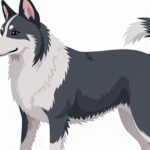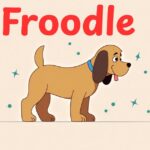Are you looking for the perfect blend of a loyal guardian and an adventurous companion? The Cane Corso Husky mix might just be your dream dog! This amazing hybrid dog breeds combines the protective nature of the Italian Mastiff with the energetic spirit of Siberian sled dogs.
In this complete guide, you’ll discover everything about Cane Corso Husky mix info, pictures, care & more. From temperament and training to health and grooming, we’ll cover what makes this Siberian Corso such a special family companion.
Whether you’re searching for a Cane Corso Husky mix puppy or wondering about the Cane Corso and Husky mix price, this comprehensive article has all the answers you need to make an informed decision.
Breed Overview
The Cane Corso Husky mix is a fascinating crossbreed that brings together two incredible working dog lineages. This Husky Cane Corso crossbreed isn’t your typical family pet – it’s a large guard dog with the heart of an adventure seeker.
Quick Stats Table
| Characteristic | Details |
|---|---|
| Height | 20–27 inches |
| Weight | 40–100 pounds |
| Lifespan | 8–14 years |
| Colors | Varies (black, gray, brown, white combinations) |
| Best for | Experienced owners, active families |
| Temperament | Intelligent, loyal, protective, affectionate |
| Exercise Needs | 1-2 hours daily |
| Grooming | Moderate to high |
Meet the Parent Breeds
The Cane Corso and Siberian Husky mix comes from two amazing bloodlines:
Cane Corso Background:
- Originally from Italy
- Descended from ancient Molossi war dogs used by Romans
- Traditional role as large guard dogs and farm protectors
- Known for loyalty and protective instincts
Siberian Husky Background:
- Native to Russia and the Chukchi Peninsula
- Bred by the Chukchi people as sled dogs
- Famous for endurance and energetic working dog nature
- Intelligent dog breeds with strong pack mentality
This combination creates a Husky Mastiff mix that’s both protective and playful, making them excellent protective family companions.
Cane Corso Husky Mix Characteristics
Physical Appearance
The Cane Corso Husky hybrid dog is truly eye-catching. These dogs typically inherit the muscular build of the Cane Corso with some of the Husky’s athletic grace.
Size Variations:
- Males: Usually 24-27 inches tall, 70-100+ pounds
- Females: Generally 20-25 inches tall, 40-80 pounds
Coat and Colors:
- Double coat from the Husky lineage
- Colors range from solid black to gray, brown, and white combinations
- Some may have the Husky’s distinctive markings
- Seasonal shedding patterns
Facial Features:
- Strong, broad head like the Cane Corso
- May have Husky’s striking blue or brown eyes
- Ears can be floppy or semi-erect
- Powerful jaw structure
Personality Traits Matrix
Here’s what makes these affectionate family dogs so special:
| Trait | Level | Notes |
|---|---|---|
| Energy | Very High | Needs daily exercise for Huskies |
| Trainability | Moderate-High | Stubborn but trainable dogs |
| Health | Good | Some breed-specific concerns |
| Lifespan | Above Average | 8-14 years for large breeds |
| Sociability | Reserved but Loyal | Watchdog temperament |
Cane Corso Husky Mix Breed Puppies
Finding Your Perfect Puppy
Looking for Cane Corso Husky mix info, pictures, care & more for sale? Here’s what you need to know:
Cost Expectations:
- Adoption: $50-$200 from shelters
- Breeders: $300-$800+ depending on lineage
- Rescue organizations: Often the most affordable option
The Cane Corso and Husky mix price varies significantly based on:
- Location and demand
- Parent breed quality
- Health screening completed
- Breeder reputation
Where to Find Puppies
Best Sources for Husky Cane Corso mix puppies:
- Local animal shelters – Often have mixed breeds
- Breed-specific rescues – Sometimes have Cane Corso mix breeds
- Responsible breeders – Ensure health testing
- Online platforms – Check credentials carefully
Red Flags to Avoid:
- Puppy mills or backyard breeders
- No health certifications
- Won’t let you meet parent dogs
- Unusually low prices (could indicate health issues)
Puppy Development Timeline
| Age | Development Stage | Key Focus |
|---|---|---|
| 8-12 weeks | Early socialization | Basic handling, sounds, sights |
| 3-6 months | Critical learning period | Socializing large breed dogs |
| 6-12 months | Adolescent phase | Consistency in training |
| 12-18 months | Reaching maturity | Advanced training, exercise increase |
Temperament & Intelligence of the Cane Corso Husky Mix 🧠
Intelligence Assessment
Both parent breeds are among the intelligent dog breeds, making this mix incredibly smart:
Problem-Solving Abilities:
- Quick learners when motivated properly
- Excellent memory for commands and routines
- Can figure out complex puzzles and tasks
- Natural working dog instincts remain strong
Learning Capacity: The Siberian Corso typically shows:
- Fast command acquisition (with positive reinforcement dog training)
- Stubborn streaks requiring patience
- High need for mental stimulation for dogs
- Best response to varied, interesting training sessions
Behavioral Characteristics
Protective Instincts: These loyal protective dogs inherit strong guardian tendencies from their Cane Corso side. They’re naturally:
- Alert to strangers and unusual sounds
- Territorial about their home and family
- Calm but ready to act when needed
- Discriminating – not aggressive without reason
Social Nature: The Husky influence brings:
- Pack mentality – they want to be part of the family
- Playfulness that continues into adulthood
- Curiosity about new people and situations
- Less vocal than pure Huskies but still communicative
Working Dog Heritage Impact
Both parent breeds were designed for jobs, so your Cane Corso Husky mix will need:
Purpose and Tasks:
- Regular “work” like training exercises
- Mental challenges through puzzle toys
- Opportunities to use their natural instincts
- Outdoor activities with dogs like hiking or jogging
Are These Dogs Good for Families? 👪
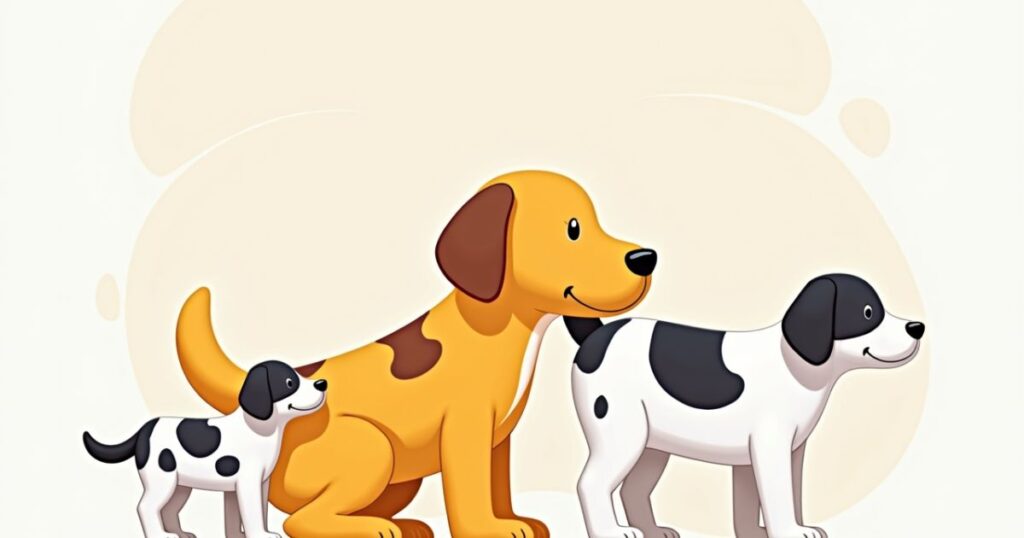
Absolutely! The Cane Corso Husky mix can make an excellent family companion when properly matched to the right household.
Ideal Family Situations
Best Match:
- Active families who enjoy outdoor adventures
- Experienced dog owners who understand large breeds
- Homes with teenagers or adults rather than small children
- Families committed to daily exercise and training
Living Space Requirements:
- Yard preferred but not absolutely necessary
- Apartment living possible with adequate exercise
- Safe, fenced areas for off-leash play
- Access to parks or hiking trails nearby
Time Commitment Breakdown
| Daily Activity | Time Needed | Purpose |
|---|---|---|
| Exercise | 60-120 minutes | Physical fitness, energy outlet |
| Training | 15-30 minutes | Obedience, mental stimulation |
| Grooming | 10-15 minutes | Brushing, coat maintenance |
| Bonding | 30+ minutes | Social connection, play |
Family Dynamics
Bonding Patterns: These affectionate family dogs typically:
- Form strongest bonds with primary caretakers
- Include the whole family in their “pack”
- Show different affection levels to various family members
- Require consistent interaction to prevent separation anxiety
Separation Anxiety Prevention:
- Gradual conditioning to alone time
- Mental stimulation toys when left alone
- Consistent departure and return routines
- Never leave for more than 6-8 hours initially
Read This Article: Froodle Dog Breed: Info, Pictures, Care, & Facts
What About Little Children?
This is a crucial consideration for families with young kids.
Age-Appropriate Guidelines
Recommended Minimum Age: 8-10 years for unsupervised interaction
Why This Matters:
- Large dogs (40-100 pounds) can accidentally knock over toddlers
- Strong play style may be overwhelming for small children
- Protective instincts might misinterpret children’s play as threats
- Training consistency requires mature family members
Safety Protocols
Teaching Children Proper Interaction:
- Never approach the dog while eating
- Gentle petting only – no pulling ears or tail
- Calm voices – no screaming or sudden movements
- Adult supervision always required with children under 10
Creating Safe Spaces:
- Dog has a quiet retreat area
- Children understand boundaries
- Baby gates to separate when needed
- Consistent rules everyone follows
Success Stories
Many families report wonderful relationships between their Cane Corso Husky mix and children when:
- Proper introduction and training occurred
- Children were taught respect and boundaries
- Adult supervision was consistent
- The dog received adequate exercise and training
Does This Breed Get Along With Other Pets? 🐶 😽
The Cane Corso Husky relationship with other pets depends heavily on early socialization and individual personality.
Dog-to-Dog Relationships
Compatibility Factors:
- Early socialization is absolutely critical
- Same-sex aggression possible, especially with males
- Size matching – they play rough
- Pack hierarchy needs establishment
Success Strategies:
- Puppy socialization classes
- Controlled introductions to new dogs
- Positive experiences with various dog types
- Ongoing training and reinforcement
Cats and Small Animals
The Reality:
- Huskies have high prey drive toward small animals
- Cane Corsos can be trained to accept cats
- Individual variation is significant
- Supervision always necessary initially
Best Practices for Multi-Pet Homes:
| Introduction Phase | Duration | Key Actions |
|---|---|---|
| Scent Introduction | 1-2 weeks | Let pets smell each other’s belongings |
| Visual Contact | 1-2 weeks | Baby gate separations, supervised viewing |
| Controlled Meetings | 2-4 weeks | Short, supervised interactions |
| Free Interaction | Ongoing | Only after consistent positive responses |
Small Animal Considerations
High Risk Pets:
- Rabbits, guinea pigs, hamsters
- Birds (especially free-flying)
- Cats (individual basis)
Medium Risk:
- Larger cats who can defend themselves
- Other large dogs with proper introduction
Best Companions:
- Dogs of similar size and energy
- Cats raised together from puppyhood
Things to Know When Owning a Cane Corso Husky Mix
Owning this amazing crossbreed comes with specific responsibilities and rewards.
Key Ownership Considerations
Before You Commit:
- 10-14 year commitment to a large, active dog
- Higher food costs than smaller breeds
- Veterinary expenses for large breed health issues
- Time investment for exercise and training
Lifestyle Requirements:
- Daily exercise non-negotiable
- Mental stimulation equally important
- Consistent training throughout their lives
- Socialization opportunities regularly
Food & Diet Requirements 🦴
Proper nutrition is essential for these large, active dogs.
Nutritional Needs for Large Breeds
Daily Caloric Requirements:
- Puppies: 1,500-2,500 calories (depending on age/size)
- Active Adults: 2,000-3,500+ calories
- Less Active Adults: 1,800-2,800 calories
- Seniors: 1,600-2,400 calories
Essential Nutrients:
- High-quality protein (minimum 25-30%)
- Healthy fats (12-18%)
- Complex carbohydrates for sustained energy
- Joint support supplements (glucosamine, chondroitін)
Best Food Choices
Recommended Food Types:
- Large breed dog food formulas
- Protein-rich dog diet options
- Grain-inclusive or grain-free (based on individual needs)
- Age-appropriate formulations
Top Ingredients to Look For:
- Real meat as first ingredient (chicken, beef, fish)
- Whole grains like brown rice or oats
- Vegetables and fruits for vitamins
- Omega fatty acids for coat health
Feeding Schedule and Portions
| Age | Meals Per Day | Portion Size | Special Notes |
|---|---|---|---|
| 8-12 weeks | 4 meals | 1/2-3/4 cup each | Puppy formula |
| 3-6 months | 3 meals | 3/4-1.5 cups each | Growth support |
| 6-12 months | 2-3 meals | 1-2 cups each | Monitor weight |
| Adult | 2 meals | 2-4 cups total daily | Maintain ideal weight |
Special Dietary Considerations
Bloat Prevention (Critical for Large Breeds):
- Never feed one large meal
- Wait 1 hour before/after exercise to feed
- Elevated bowls may help some dogs
- Slow feeding bowls prevent gulping
Common Food Allergies:
- Chicken (most common)
- Beef
- Dairy products
- Wheat/grains (less common than believed)
Weight Management Tips:
- Regular body condition scoring
- Measured portions – no free feeding
- Healthy treats only (less than 10% of daily calories)
- Adjust for activity level changes
Exercise 🐕
The Cane Corso Husky mix has high energy requirements that must be met for their physical and mental wellbeing.
Daily Exercise Requirements
Minimum Exercise Needs:
- 60-120 minutes of physical activity daily
- Combination of walks, runs, and play
- Mental stimulation equally important as physical exercise
- Weather adaptable – these dogs handle cold well
Exercise Intensity Levels:
| Activity Level | Duration | Examples |
|---|---|---|
| Low Intensity | 30-45 minutes | Casual walking, sniffing walks |
| Moderate | 30-60 minutes | Brisk walking, light jogging |
| High Intensity | 15-45 minutes | Running, agility, intensive play |
Best Exercise Activities
Excellent Options:
- Hiking and trail running – Perfect for their endurance
- Swimming – Low-impact, full-body workout
- Agility training – Mental and physical stimulation
- Fetch and frisbee – High-intensity intervals
- Bike riding companion (with proper training)
Mental Exercise Ideas:
- Puzzle toys and treat dispensers
- Training sessions with new commands
- Nose work and scent games
- Obstacle courses in the yard
Age-Appropriate Exercise Plans
Puppy Exercise (8 weeks – 12 months):
- 5 minutes per month of age, twice daily
- Avoid forced exercise on hard surfaces
- Focus on play and exploration
- Swimming excellent – low joint impact
Adult Exercise (1-7 years):
- Full intensity activities permitted
- Endurance building through hiking
- Competition training if desired
- Daily consistency more important than weekend warriors
Senior Modifications (8+ years):
- Shorter, more frequent walks
- Swimming preferred over high-impact activities
- Gentle play and mental stimulation
- Monitor for fatigue and joint discomfort
Warning Signs and Safety
Over-Exercise Symptoms:
- Excessive panting that doesn’t subside
- Lameness or limping
- Reluctance to continue activity
- Heavy drooling or difficulty breathing
Under-Exercise Behaviors:
- Destructive behavior in the house
- Excessive barking or vocalization
- Restlessness and inability to settle
- Weight gain and muscle loss
Safety Considerations:
- Hot weather precautions – exercise early/late
- Proper hydration always available
- Paw protection on rough terrain
- Gradual conditioning for new activities
Training 🎾
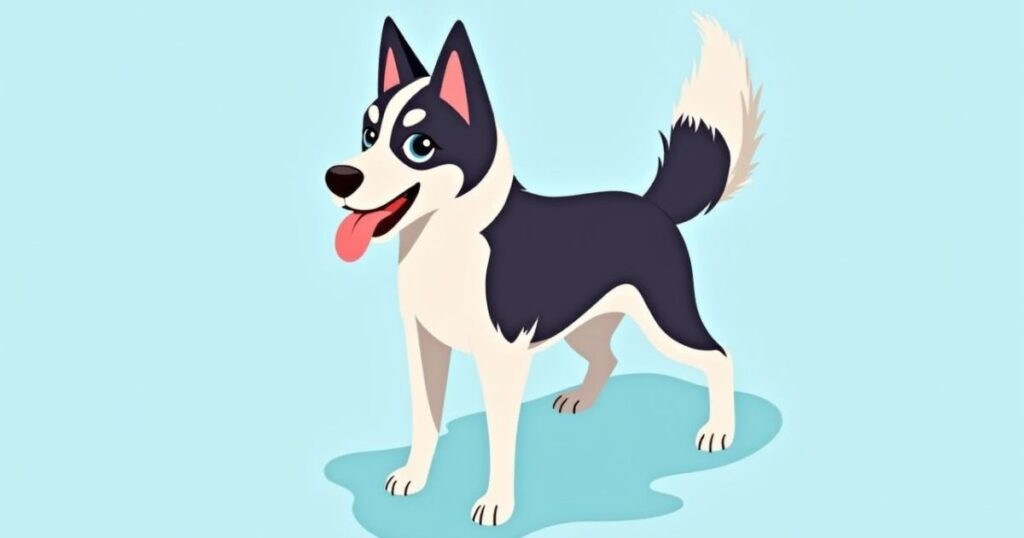
Effective training is absolutely essential for the Cane Corso Husky mix.
Training Philosophy
Core Principles:
- Positive reinforcement is most effective
- Consistency from all family members
- Short sessions (10-15 minutes) maintain focus
- Patience for stubborn moments
The Siberian Corso responds best to trainers who are:
- Confident but not harsh
- Consistent with commands and expectations
- Patient during learning phases
- Creative with motivation techniques
Essential Training Priorities
Foundation Commands (Must-Haves):
- “Sit” – Basic respect and control
- “Stay” – Impulse control and safety
- “Come” – Critical for safety and freedom
- “Down” – Relaxation and submission
- “Heel” – Leash training large dogs essential
Intermediate Skills:
- “Wait” at doors and before meals
- “Leave it” for dangerous items/food
- “Gentle” for interactions with children
- “Quiet” to control barking
Specialized Training Areas
Socialization Training: Socializing large breed dogs requires:
- Early exposure (8-16 weeks critical period)
- Positive experiences with various people, dogs, situations
- Ongoing reinforcement throughout life
- Controlled environments initially
Guard Dog Training: Many owners want to develop their protective family companion abilities:
- Professional trainer recommended for guard work
- Distinction between protection and aggression
- Controlled responses to actual threats only
- Family safety always the priority
Common Training Challenges
Stubbornness Management:
- Find the right motivation (food, toys, praise)
- Keep sessions interesting and varied
- End on positive notes to maintain enthusiasm
- Never use harsh corrections – they shut down
Recall Training: This is challenging but essential:
- Start in enclosed areas
- High-value rewards every time
- Never call for something negative
- Practice daily in various environments
Leash Training: These strong dogs require specific techniques:
- No-pull harnesses or head collars
- Positive reinforcement for walking beside you
- Direction changes when they pull
- Consistent practice in low-distraction areas first
Professional Training Resources
When to Seek Help:
- Aggression toward people or other dogs
- Severe separation anxiety
- Destructive behavior despite adequate exercise
- Lack of progress with basic commands
Training Class Options:
- Puppy socialization classes
- Basic obedience group classes
- Advanced training for specific skills
- Private lessons for behavioral issues
Grooming ✂️
The Cane Corso Husky mix has moderate to high grooming needs due to their double coat.
Coat Care Essentials
Understanding the Double Coat: Your Siberian Corso likely inherited the Husky’s double coat:
- Outer guard hairs repel water and debris
- Soft undercoat provides insulation
- Seasonal shedding occurs twice yearly
- Year-round maintenance required
Essential Grooming Tools:
| Tool | Purpose | Frequency |
|---|---|---|
| Slicker brush | Daily brushing, surface tangles | Daily during shedding |
| Undercoat rake | Remove loose undercoat | 2-3x weekly |
| De-shedding tool | Heavy shedding periods | Seasonal use |
| Pin brush | Finishing, fluffing | As needed |
| Nail clippers | Trimming dog nails | Every 2-3 weeks |
Brushing Schedule
Daily Routine (5-10 minutes):
- Quick brush-through with slicker brush
- Check for mats behind ears, under arms
- Remove debris from outdoor adventures
Weekly Deep Grooming (20-30 minutes):
- Thorough brushing with undercoat rake
- Check skin condition for irritation or parasites
- Clean ears and trim nails if needed
Seasonal Coat “Blowouts”:
- Spring and fall intensive shedding periods
- Daily brushing essential during these times
- Professional grooming may be helpful
- Extra vacuum maintenance around the house!
Bathing and Hygiene
Bathing Frequency:
- Every 3-4 months for normal dogs
- As needed for dirty outdoor adventures
- Over-bathing strips natural oils from double coats
Bathing Process:
- Thorough brushing before getting wet
- Lukewarm water – never hot
- Dog-specific shampoo only
- Complete rinsing – soap residue causes irritation
- Towel dry then air dry or blow dry on cool
Complete Grooming Routine
Nail Care:
- Trimming dog nails every 2-3 weeks
- Black nails more challenging – trim tiny bits
- Positive association with treats and praise
- Professional help if dog is resistant
Ear Care:
- Weekly inspection for redness, odor, discharge
- Gentle cleaning with dog ear solution
- Never use Q-tips – can damage ear canal
- Both parent breeds prone to ear infections
Dental Care: Dental care for dogs is crucial:
- Daily tooth brushing ideal
- Dental chews and toys help
- Professional cleanings as recommended by vet
- Bad breath can indicate dental problems
Professional vs. DIY Grooming
DIY Maintenance:
- Daily brushing
- Basic nail trims
- Ear cleaning
- Regular baths
Professional Services:
- Seasonal deep de-shedding
- Nail trims (if dog is difficult)
- Anal gland expression
- Specialized skin treatments
Cost Considerations:
- Professional grooming: $50-$100+ per session
- DIY supplies: $100-$200 initial investment
- Mobile groomers: Convenience at higher cost
Health and Conditions ❤️
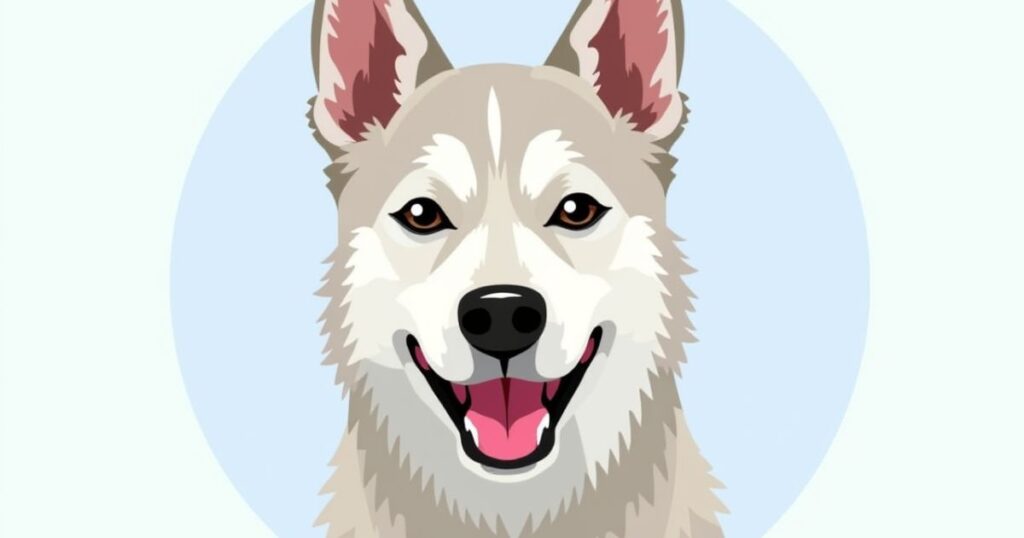
Understanding Cane Corso Husky health issues helps you provide the best care for your companion.
Common Health Concerns
Both parent breeds contribute to potential health issues in this mix.
Serious Conditions
Gastric Dilatation-Volvulus (Bloat): This life-threatening emergency affects large, deep-chested breeds:
Symptoms:
- Swollen, hard belly
- Unsuccessful attempts to vomit
- Restlessness and pacing
- Difficulty breathing
- Rapid heart rate
Prevention Strategies:
- Multiple small meals instead of one large meal
- Wait 1 hour before/after exercise to feed
- Avoid elevated food bowls (controversial – consult your vet)
- Slow feeding methods
Hip and Elbow Dysplasia: Joint malformations common in large breeds:
- Genetic component – check parent health clearances
- Environmental factors – proper nutrition, controlled exercise
- Symptoms: Limping, difficulty rising, decreased activity
- Management: Weight control, joint supplements, potentially surgery
Progressive Retinal Atrophy (PRA): Inherited eye condition from Husky lineage:
- Gradual vision loss leading to blindness
- Night blindness often first symptom
- No cure but dogs adapt well
- Genetic testing available for breeding dogs
Minor but Important Conditions
Hypothyroidism: Underactive thyroid affecting metabolism:
- Symptoms: Weight gain, lethargy, coat problems
- Diagnosis: Simple blood test
- Treatment: Daily medication, excellent prognosis
Skin Conditions:
- Zinc deficiency – especially in Huskies
- Allergies to foods or environmental factors
- Follicular dysplasia – coat and skin problems
- Management: Proper diet, veterinary treatment
Preventive Health Care
Essential Health Screening:
| Test | When | Purpose |
|---|---|---|
| Hip/Elbow X-rays | 2+ years | Dysplasia screening |
| Eye exams | Annual | Retinal atrophy in Huskies, cataracts |
| Thyroid panel | 3+ years, then annual | Hypothyroidism in dogs |
| Cardiac screening | As recommended | Heart condition detection |
Vaccination Schedule:
- Core vaccines: Rabies, DHPP (distemper, hepatitis, parvovirus, parainfluenza)
- Lifestyle vaccines: Lyme, kennel cough, others as recommended
- Annual boosters as directed by veterinarian
Regular Health Monitoring:
- Annual veterinary exams minimum
- Bi-annual exams for seniors (7+ years)
- Weight monitoring – obesity shortens lifespan
- Exercise tolerance – watch for changes
Lifespan and Quality of Life
Average Lifespan: 8-14 years Factors Affecting Longevity:
- Quality genetics from parent breeds
- Proper nutrition throughout life
- Adequate exercise and mental stimulation
- Preventive veterinary care
- Weight management
Senior Care Planning (7+ years):
- Joint health supplements (glucosamine, chondroitin)
- Modified exercise routines
- Regular health screenings
- Comfortable sleeping areas
- Diet adjustments for changing needs
Pet Insurance Considerations
Why Consider Insurance:
- Large breed health issues can be expensive
- Emergency surgery costs $3,000-$8,000+
- Chronic condition management adds up over time
- Peace of mind for health decisions
What to Look For:
- Coverage for hereditary conditions
- Reasonable deductibles and co-pays
- No breed exclusions
- Good customer reviews
Male vs Female Cane Corso Husky Mix
Understanding the differences can help you choose the right gender for your family.
Physical Differences
Size Comparison:
| Gender | Height | Weight | Build |
|---|---|---|---|
| Male | 24-27 inches | 70-100+ pounds | Broader, more muscular |
| Female | 20-25 inches | 40-80 pounds | Slightly more refined |
Other Physical Traits:
- Males: Broader heads, thicker necks, more imposing presence
- Females: More proportionate features, quicker maturity
Temperament Differences
Male Characteristics:
- More outgoing with strangers initially
- Playful nature continues longer into adulthood
- Higher territorial marking tendency
- Potentially more dog-aggressive with other males
- Eager to please attitude
Female Characteristics:
- More reserved and cautious with new people
- Stronger protective instincts toward family
- Earlier mental maturity
- More focused during training sessions
- Can be more independent
Training and Behavioral Considerations
Male Training Traits:
- Respond well to positive reinforcement
- May be more distractible during adolescence
- Consistency crucial for boundary setting
- Generally more forgiving of training mistakes
Female Training Traits:
- Quicker to learn commands initially
- More serious approach to training
- Better focus during sessions
- May hold grudges longer if treated harshly
Health and Spay/Neuter Considerations
Spaying/Neutering Benefits:
- Reduces cancer risks (mammary, testicular, ovarian)
- Eliminates heat cycles and unwanted breeding
- May reduce territorial marking and roaming
- Can decrease same-sex aggression
Timing Recommendations:
- Large breeds: Wait until 12-24 months for growth plate closure
- Consult veterinarian for individual recommendations
- Health screening before surgery
Which Gender is Right for You?
Choose a Male if you want:
- More outgoing personality
- Playful companion for active family
- Less cautious with new people
- Bigger presence for property protection
Choose a Female if you want:
- More focused training partner
- Stronger family protection instincts
- Earlier maturity and easier management
- Slightly smaller size for easier handling
Remember: Individual personality matters more than gender in many cases!
3 Little-Known Facts About the Cane Corso Husky Mix
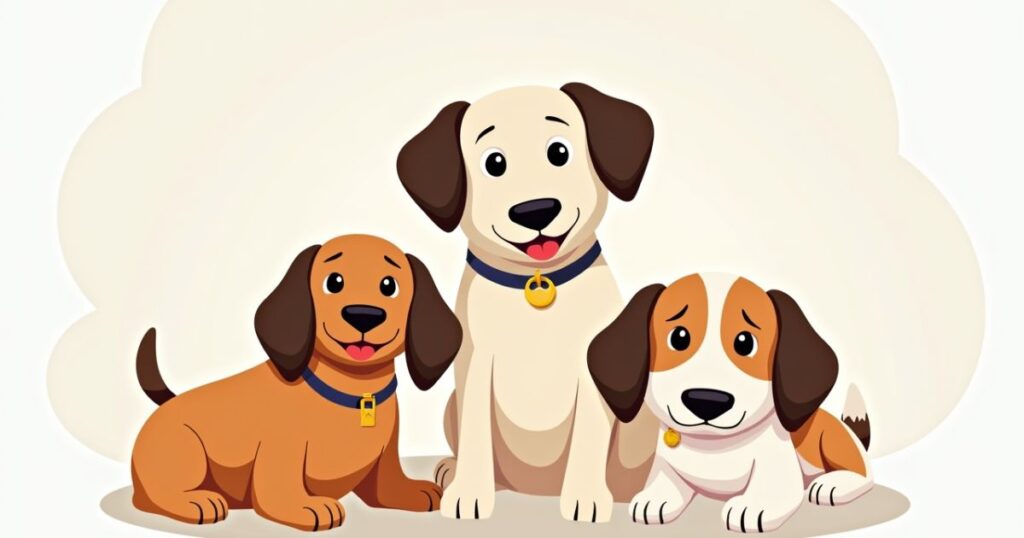
1. No Kennel Club Recognizes It as a Breed
The Cane Corso Husky hybrid dog exists in a unique category that many people don’t understand.
Why No Recognition:
- Hybrid status rather than purebred lineage
- Inconsistent traits between individual dogs
- No established breed standard for appearance or temperament
- Recent development – not enough generations for stability
Impact on Owners:
- Cannot compete in AKC, UKC, or other purebred dog shows
- No breed-specific clubs or organizations
- Registration limitations – often just as “mixed breed”
- Lower resale value compared to purebreds
The Positive Side:
- Often healthier due to hybrid vigor
- More affordable than purebred alternatives
- Unique companion – no two exactly alike
- Less breeding pressure means more focus on health and temperament
Future Possibilities: Some hybrid dog breeds eventually gain recognition:
- Labradoodles and Goldendoodles gaining acceptance
- Consistent breeding programs could develop standards
- Growing popularity might drive official recognition
- Designer dog trend continuing to evolve
2. Its Parent Breeds Come From Italy and Russia
The fascinating international heritage of this mix spans continents and centuries.
Cane Corso Italian Heritage
Ancient Origins:
- Descended from Molossi – ancient Greek war dogs
- Roman adoption after defeating Greek armies
- Bred with local Italian dogs for specific traits
- Name meaning: “Corso” = guard or bodyguard in old Italian
Historical Roles:
- Farm guardians protecting livestock from wolves
- Property protection for Italian estates
- Wild boar hunting companions
- War dogs for Roman legions
Near Extinction and Revival:
- Post-WWII decline – mechanization reduced need for working dogs
- 1970s revival efforts by Italian breed enthusiasts
- Official breed recognition by Italian Kennel Club in 1994
- American introduction in the 1980s
Siberian Husky Russian Origins
Chukchi People Legacy:
- Indigenous Chukchi Peninsula people developed the breed
- Selective breeding for 3,000+ years
- Survival traits essential in harsh Arctic conditions
- Cultural significance – dogs were family members, not just workers
Famous Historical Moment: The 1925 Alaska serum run showcased Husky endurance:
- Diphtheria outbreak threatened Nome, Alaska
- Leonhard Seppala led the most dangerous leg of the relay
- 674-mile journey in brutal winter conditions
- 5.5 days to deliver life-saving antitoxin
- Balto and Togo became legendary sled dogs
Modern Husky Development:
- First AKC registration in 1930
- Siberian Husky Club of America founded in 1938
- Racing popularity spread the breed worldwide
- Family pet transition began in 1960s-70s
Cultural Impact Today
Combined Heritage Benefits:
- Italian guardian instincts + Russian endurance
- Mediterranean loyalty + Arctic adaptability
- Ancient working dog wisdom from both lineages
- International appeal to modern families
3. These Dogs Rarely Drool
This might surprise many people expecting typical large breed messiness!
Why Less Drooling?
Genetic Factors:
- Cane Corsos have moderate drooling for mastiff-type breeds
- Siberian Huskies are naturally low-drool dogs
- Lip structure from Husky lineage often dominant
- Mouth shape affects saliva retention
Comparison to Other Large Breeds:
| Breed | Drool Level | Notes |
|---|---|---|
| Saint Bernard | Very High | Constant drooling |
| English Mastiff | High | Heavy jowls = more drool |
| Rottweiler | Moderate-High | Some drooling, especially when excited |
| German Shepherd | Low-Moderate | Situational drooling |
| Cane Corso Husky Mix | Low-Moderate | Below average for size |
Practical Benefits:
- Less furniture protection needed
- Cleaner car rides and travel
- Reduced laundry from slobbery clothes
- Better for people sensitive to dog saliva
When Drooling Increases: Even low-drool dogs may drool more:
- Hot weather – natural cooling mechanism
- Excitement around food or activities
- Stress or anxiety situations
- Health issues – excessive drooling warrants vet check
Health Monitoring: Sudden drooling changes can indicate:
- Dental problems or mouth injuries
- Nausea or digestive upset
- Heat stroke or overheating
- Poisoning – immediate emergency
Conclusion
Is a Cane Corso Husky Mix Right for You?
The Cane Corso Husky mix represents an incredible combination of loyalty, intelligence, and protective instincts wrapped in an energetic, affectionate package. This Siberian Corso isn’t just a pet – it’s a devoted family guardian and adventure companion.
Perfect Owner Profile:
- Experienced with large breeds
- Active lifestyle with time for daily exercise
- Committed to consistent training and socialization
- Patient with stubborn moments
- Prepared for 10-14 year commitment
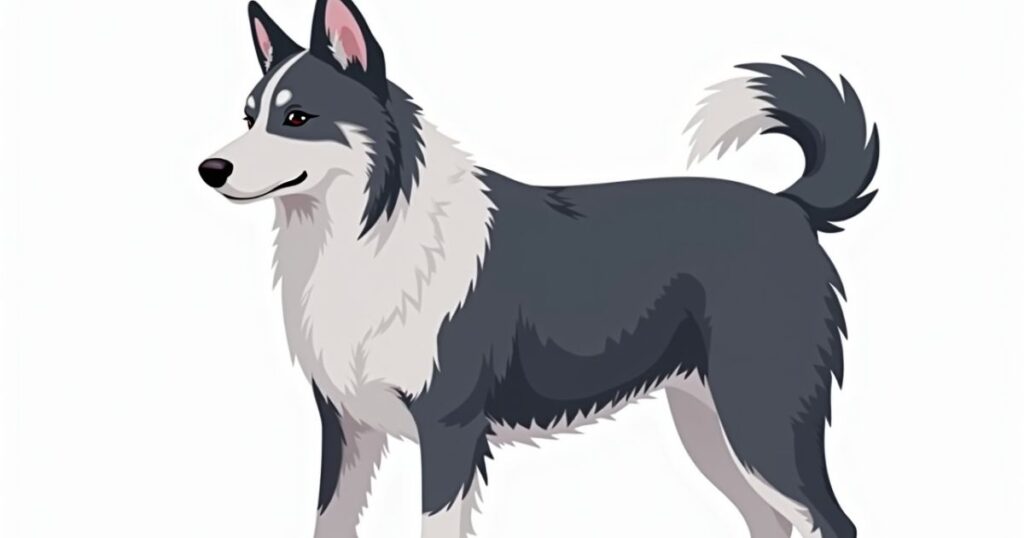


![Catahoula Leopard Dog: Complete Breed Guide, Traits & Care Tips [2025]](https://autocheezup.com/wp-content/uploads/2025/09/catahoula-leopard-dog-complete-breed-guide-traits-and-care-tips-2025-150x150.jpg)
